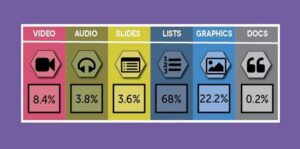
How to Reskill Your Workforce for Tomorrow’s Challenges
Workplace evolution is natural. In its time, the digital workplace of the late 20th century was revolutionary. But that era has come and gone. And

Workplace evolution is natural. In its time, the digital workplace of the late 20th century was revolutionary. But that era has come and gone. And

People often hate the idea of networking, either because they’re introverts by nature, they’re afraid of rejection, or they don’t want to seem pushy, self-absorbed,

At what point in a career does learning stop? Hopefully, never! Most business and technical professionals realize that becoming proficient in a job and becoming

“Absence makes the heart grow fonder.” No doubt, you’ve heard this familiar quote. You may even have said it to encourage others who are separated
A dear friend’s TWINS (yes all caps) just entered a prestigious New England university. They are bright, driven, focused students and they’ll do well. They’d
Opportunities for growth can really make or break employee retention ratings. It’s the reason why 76 percent of employees choose to stay with an organization.
I checked my latest Instagram/Facebook picture post and one of the comments read: “You really should have your own reality show, Kevin.” I smiled. KevTV,

Knowing which social media resources to use and how to get the most from them can help during job hunting as well as for taking

It’s a very merry #TChatHoliday! See Tim McDonald and Kevin Grossman compare end-of-year notes in a brief hangout — and then share your own thoughts!

How can social learning create a competitive advantage for today’s organizations? Ideas you can use — from this week’s 3rd Anniversary #TChat events

Are new technologies emerging so rapidly that organizations can’t keep pace? What’s ahead in HR innovation and how should we prepare?

Why is social learning suddenly such a hot business issue? Consider three fundamental facts…

It may seem like a fine line between #TChat events and controlled chaos, but there’s more here than meets the eye. Our community considers the why and how of crowdsourcing

How does your digital content compare with popular blogs? And what can you do to improve? See what a TalentCulture audit revealed, and request a free audit for your site…

In today’s connected world of work, how can we make the most of tools and techniques that help us curate and share collective wisdom?

Ask a community like ours a question, and stand back. You’re guaranteed to get answers you never expected. A lesson in the beauty of crowdsourcing…

Twitter. For recruiters, it’s now a hot spot — not only for talent acquisition, but also for professional development. Who’s leading this social learning movement?

Conferences: Who’s redefining the concept, and what does it mean for professional communities and personal brands? The case for crowdsourcing

Today’s educational system falls far short of the mark in developing tomorrow’s leaders. What can talent-minded professionals do to bridge the gap? Social learning advocate, Angela Maiers, knows…
By definition, learning is a social function. How can business leverage this more fully to develop talent in the world of work? This week, we dug deep to explore the possibilities…
To succeed in today’s social business world, professionals must apply learning techniques to help focus on what matters most. It starts with a skill called “engagement-performance transformation.” Let’s break it down…
What does it mean to apply emerging social tools and techniques to the process of continuous learning? And why does it matter for individual professionals and the organizations we serve? Let’s talk about it!
Social learning is everywhere around us – in short, bursty ideas that simultaneously draw us in and distract us from whatever we were intending to accomplish. It also brings us together across the digital divide. It’s time to embrace quality peer-to-peer exchange and shared insights…
Think you need a blog to have a blog strategy? Think again! Tips to build your online presence…
What’s a workplace culture audit – and why should you care? More than 250 talent-minded professionals joined the #TChat Twitter conversation to share their thoughts – what a dynamic forum!